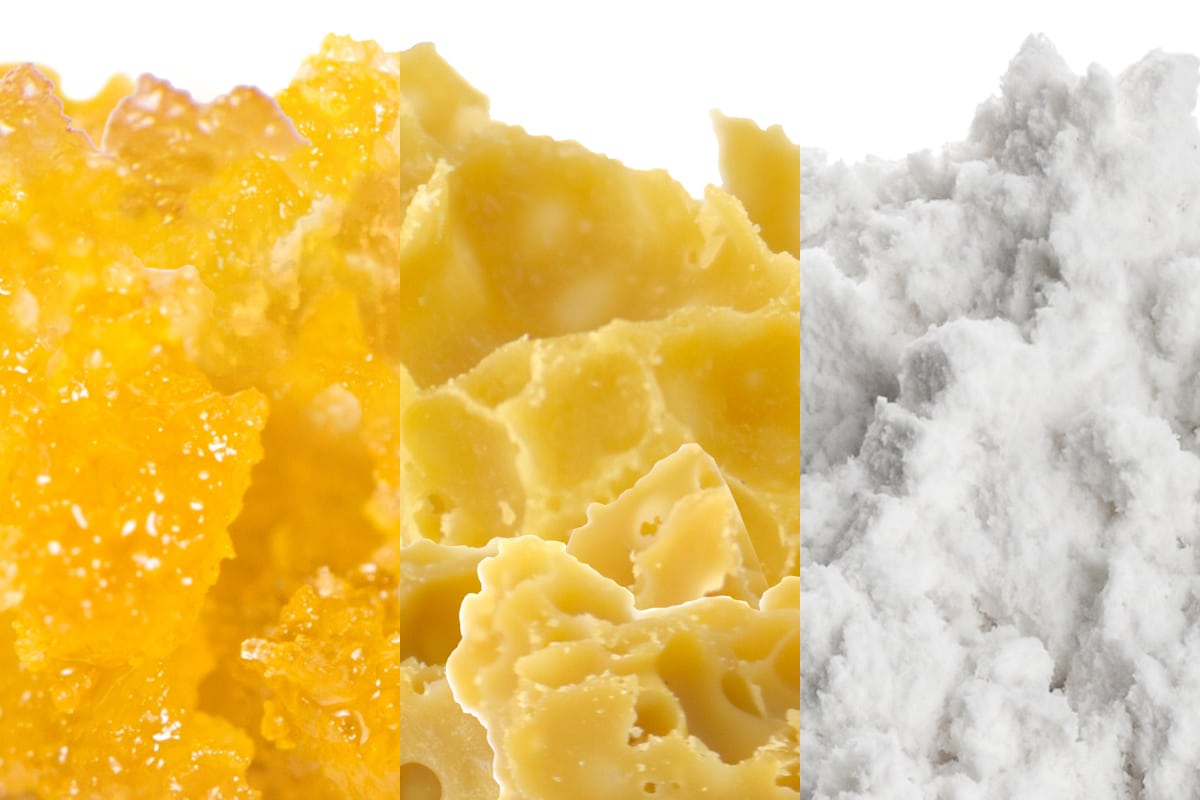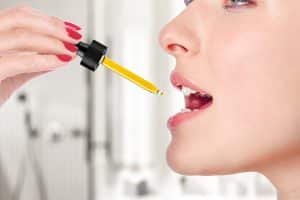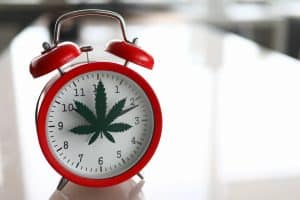Types Of CBD Oil: Full Spectrum CBD, Broad Spectrum CBD and Pure CBD Isolate Review

The Different Types Of CBD Oil
CBD formulas can be made with different types of CBD extracts (e.g., full spectrum, broad spectrum, or pure CBD isolate). They can also be formulated into different concentrations which vary the strength of the CBD product itself.
It is important for you to consider which CBD extract is used to make your CBD oil, because the CBD extract affects taste, visual characteristics, and, to a certain extent, even how the CBD formula works!
Let’s focus on the three most popular types of CBD extracts first:
- Full Spectrum CBD Oil
Contains the entire spectrum of pharmacologically active compounds derived from the cannabis plant, including synergistic cannabinoids, terpenes, essential oils, as well as a minuscule amount of THC that should legally be less than 0.3% THC by volume - Broad Spectrum CBD Oil
Contains most of the cannabinoids, terpenes, essential oils, and other pharmacologically active compounds that a full spectrum CBD extract contains with one major exception: broad spectrum CBD extracts do not contain THC (0.00%) - Pure Isolate CBD Oil
Contains only the active ingredient cannabidiol and no THC (0.00%)
Now, let’s explore the unique characteristics of each CBD extract in more detail to help you better decide which one is right for you…
What is Full Spectrum CBD Oil Extract?
Full Spectrum CBD Oil extracts were the first type of CBD derivative to be made available to the scientific community as well as on the consumer market. That’s why full spectrum CBD extracts are both the most scientifically researched and the most popular.
Not all “full spectrum” CBD products are created equal, so it is vital for you to verify that a CBD product’s contents conform to its label statements, especially when it comes to full spectrum product claims.
True full spectrum CBD contains a variety of pharmacologically active compounds, including phytonutrients that are called cannabinoids, of which CBD is one:
- CBD (cannabidiol)
- CBN (cannabinol)
- CBG (cannabigerol)
- CBC (cannabichromene)
Cannabinoids work together in a synergistic way with another group of naturally occurring phytonutrients called terpenes. The synergy between cannabinoids and terpenes is often referred to as the entourage effect in common parlance, and it is crucial to how full spectrum CBD products work.
Terpenes are aromatic compounds which give full spectrum CBD its characteristically rich and robust flavor but, more importantly, they work in conjunction with cannabinoids.
Full spectrum CBD, including the naturally occurring cannabinoids and terpenes, is non-toxic and non-psychoactive (i.e., it cannot affect your mental state in any way).
One key element of full spectrum CBD extracts that differentiates it from its similar counterparts — broad spectrum or isolate CBD — is that it contains a minuscule amount of THC. Legally, no CBD product may contain more than 0.3% THC by volume. This legal limit ensures that there is no possibility for your full spectrum CBD to have any psychoactive side effects whatsoever, even if you were to ingest more than the recommended daily amount, because there is simply not enough THC.
What is Broad Spectrum CBD?
Broad Spectrum CBD Oil extraction methods were a revolutionary discovery because they paved the way for THC-free CBD.
What makes broad spectrum CBD unique is that it still contains many of the same beneficial cannabinoids and terpenes as its full spectrum counterpart! True broad spectrum CBD should contain these primary cannabinoids and no detectable levels of THC (0.00%):
- CBD (cannabidiol)
- CBN (cannabinol)
- CBG (cannabigerol)
- CBC (cannabichromene)
The extraction process from which broad spectrum CBD is derived often lowers the total concentration of terpenes, so its flavor is typically lighter and less aromatic than full spectrum CBD. Broad spectrum extracts work very similarly in terms of the entourage effect. Although the difference between CBD extract types is statistically significant, it is likely unnoticeable to the majority of CBD users and can be easily modulated by increasing daily intake.
What is Pure Isolate CBD?
Pure CBD Isolate is at least 99% cannabidiol (CBD) and virtually nothing else, save for trace cannabinoids and terpenes in levels that are too small to detect. Pharmaceutical-grade CBD isolate should exceed 99.7% purity with 0.00% THC or less. True CBD isolate will have a white crystalline powder consistency and is typically flavorless with only a faint hint of cannabis aroma
Clinical research conducted using pure CBD isolate found no observable entourage effect due to the lack of cannabinoids and terpenes in appreciable concentrations. Nonetheless, pure CBD isolate remains comparable to full spectrum and broad spectrum CBD formulas.
Of note is that pure CBD isolate, when combined with a carrier oil, will oxidize once opened. To be clear, it is safe to consume when oxidized, but when it is mixed with a clear carrier oil like MCT, there may be a hint of light pink or light purple to it because of the natural chemical reaction between CBD isolate, oil and oxygen.
Which type of CBD should I take?
Here are some final considerations to keep in mind when deciding which type of CBD extract is right for you:
- All three types of CBD extracts contain the active ingredient cannabidiol (CBD)
- Full spectrum CBD extracts have a stronger phytonutrient profile than broad spectrum or pure isolate CBD, but they also contain a tiny fraction of THC (less then the legal limit of 0.3%)
- Broad spectrum CBD and pure CBD isolate do not contain detectable levels of THC (<0.0% to <0.00%), and they perform very similarly to full spectrum CBD formulas
- Full spectrum CBD and broad spectrum CBD typically have a distinct flavor profile due to their terpene content
- Pure CBD isolate products are typically odorless and flavorless
CBD Oil Comparison Chart
Now that you have an understanding of the differences between CBD oil blends, you can use the following quick reference chart to compare the cannabinoid content of Organica Naturals True Full Spectrum CBD Oil, Organica Naturals Broad Spectrum CBD Oil, and Zero High Pure Isolate CBD Oil.
CBD Oil Comparison Chart |
|||
|---|---|---|---|
| Characteristic | Full Spectrum CBD Oil | Broad Spectrum CBD Oil | Pure Isolate CBD Oil |
| CBD (Cannabidiol | Yes | Yes | Yes |
| CBN (Cannabinol) | Yes | Yes | No |
| CBG (Cannabigerol) | Yes | Yes | No |
| CBC (Cannabichromene) | Yes | Yes | No |
| Cannabidivarin (CBDV) | Yes | Yes | No |
| Tetrahydrocannabinol (THC) | Yes1 | No2 | No3 |
| Hemp Terpenes | Yes | Yes | No |
| Color | Amber / Mahogany | Amber / Mahogany | Colorless |
| Aroma | Natural Hemp | Natural Hemp | Odorless |
| Extraction Method | Sub Zero | Sub Zero | Sugar Cane Ethanol |
| Maximum Potency (Bottle) | 5,000MG | 5,000MG | 10,000MG |
| Maximum Potency (One Dose) | 167 mg | 167 mg | 333 mg |
| USDA Certified Organic | Yes | Yes | No |
| Product Information | Full Spectrum CBD Oil | Broad Spectrum CBD Oil | Pure Isolate CBD Oil |
1Organica Naturals True Full Spectrum CBD Oil contains an insignificant amount of THC (<0.3% THC by volume).
2Organica Naturals Broad Spectrum CBD Oil contains undetectable amounts of THC (0.0% THC by volume).
3Zero High Pure Isolate CBD Oil contains zero (0.00%) THC by volume.











